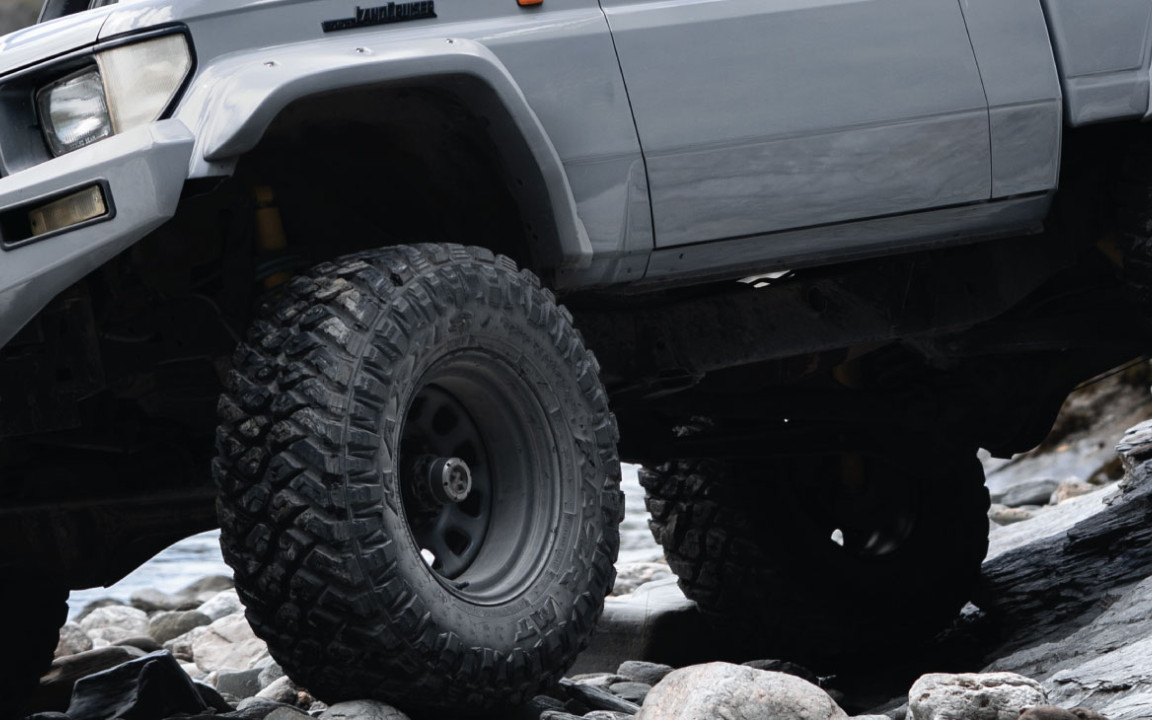
Get the best from them Tyres.
The Pressure To Perform
Your tyres are made to perform under pressure but it has to be just right. Over-inflated tyres wear quicker and will have less grip, especially in the wet. Under-inflated tyres can shorten the tyre life and compromise steering response and stability.
Getting it right depends on the vehicle they’re fitted to and how much weight the vehicle is carrying. Now, you could ask your buddy in his beat-up old 4x4 that has an alloy dog box on the back and enough gear to survive in scrub for a month, but chances are your setup is a little different. In which case, have a read of the below. And if it’s not clear enough, drop us a message. We’ll be keen to help.
How To Get The Pressure Right
The best way to get the tyre pressure right is to match the PSI for the load. The vehicle manufacturer will share the recommended tyre pressures for both a laden and unladen vehicle in the instruction manual. You might also find it on the door pillar or occasionally, inside the fuel cap cover.
The big thing to be aware of here is that your recommended tyre pressure will change depending on the load you’re carrying. Unladen ute? The minimums specified by the manufacturer will give you all the load carrying capacity you need. Load it up and you might need a bit more - here an example of pretty standard recommendations for tyres in size 265/65R17:
PSI |
29 |
32 |
35 |
40 |
45 |
50 |
55 |
60 |
65 |
70 |
75 |
80 |
||
|
110 Load |
P-rated 265/65R17 |
Load capacity KG |
975 |
1025 |
1060 |
|||||||||
|
120 Load |
L-rated 265/65R17 |
Load |
801 |
878 |
955 |
1030 |
1098 |
1166 |
1250 |
1300 |
1363 |
1400 |
Another thing to be aware of: The recommended pressure will vary depending on whether you’re running LT or P-Rated tyres. LT-rated tyres need more pressure to carry the same amount of load (see table above). Note that some vehicle manufacturers only make a recommendation for P-rated tyres, so that may need to be adjusted for LT-rated tyres.
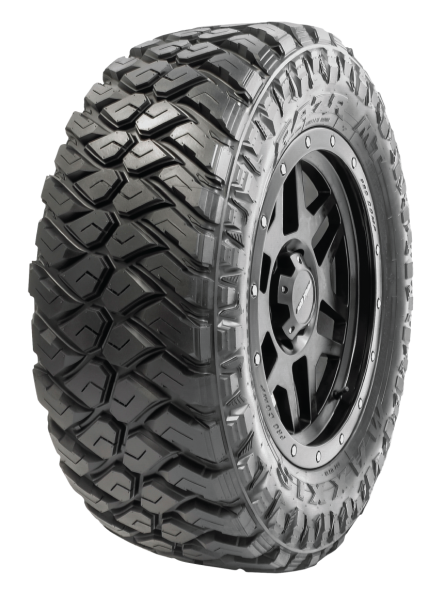
-
Tyre Pressure is Too Low
When your inflation pressure is too low, the tyre shoulders take the load, leading to uneven wear and reduced tyre life, as well as sluggish handling. On top of that, the increased rolling resistance will mean more frequent trips to the petrol station are needed.
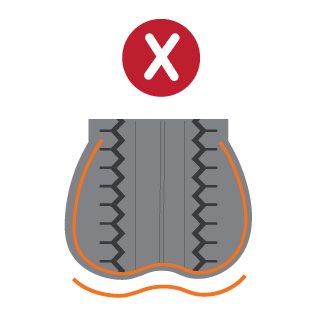

-
Tyre Pressure is Too High
The reduced size of the contact patch with the road results in less grip, both on wet roads and off road. Handling also becomes an issue. The centre of the tyre wears quicker and results in a shorter tyre life expectancy.
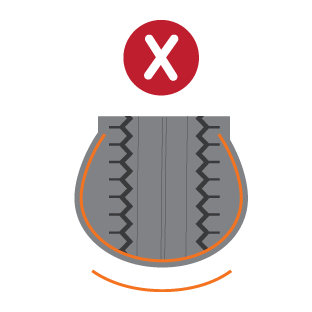

-
Tyre Pressure is Just Right
The tyre will perform at its best. Grip and handling is maximised in both dry and wet conditions. Wearing evenly, the tyre will last for a significantly higher number of kilometres.
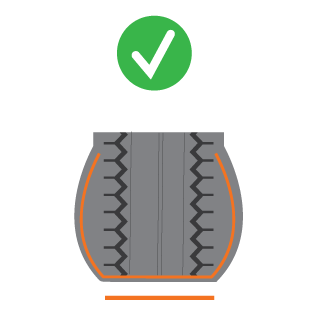

Are my tyres LT or P-rated?
Many 4x4 tyres are actually LT tyres. You can tell by looking at the sidewall, where you should see either ‘LT’, ‘8PR’ or ‘10PR’ written. The 10PR refers to the fact that LT tyres have a 10 ply rating.
Once you’ve identified the correct inflation pressure, be sure to check the tyres about once a month to make sure that pressure is being maintained.
Need a hand?
We can help with your vehicle setup. Contact us here.